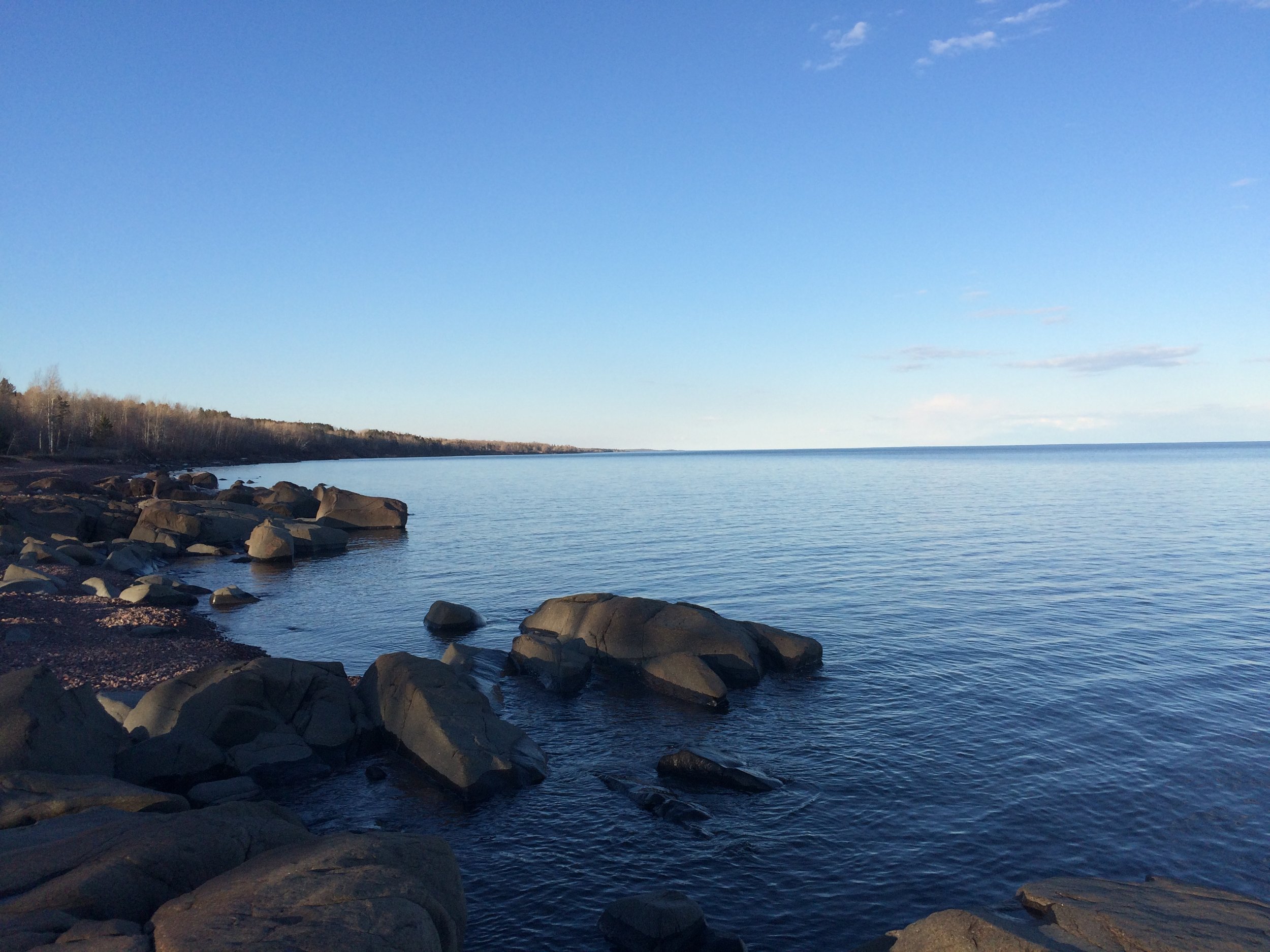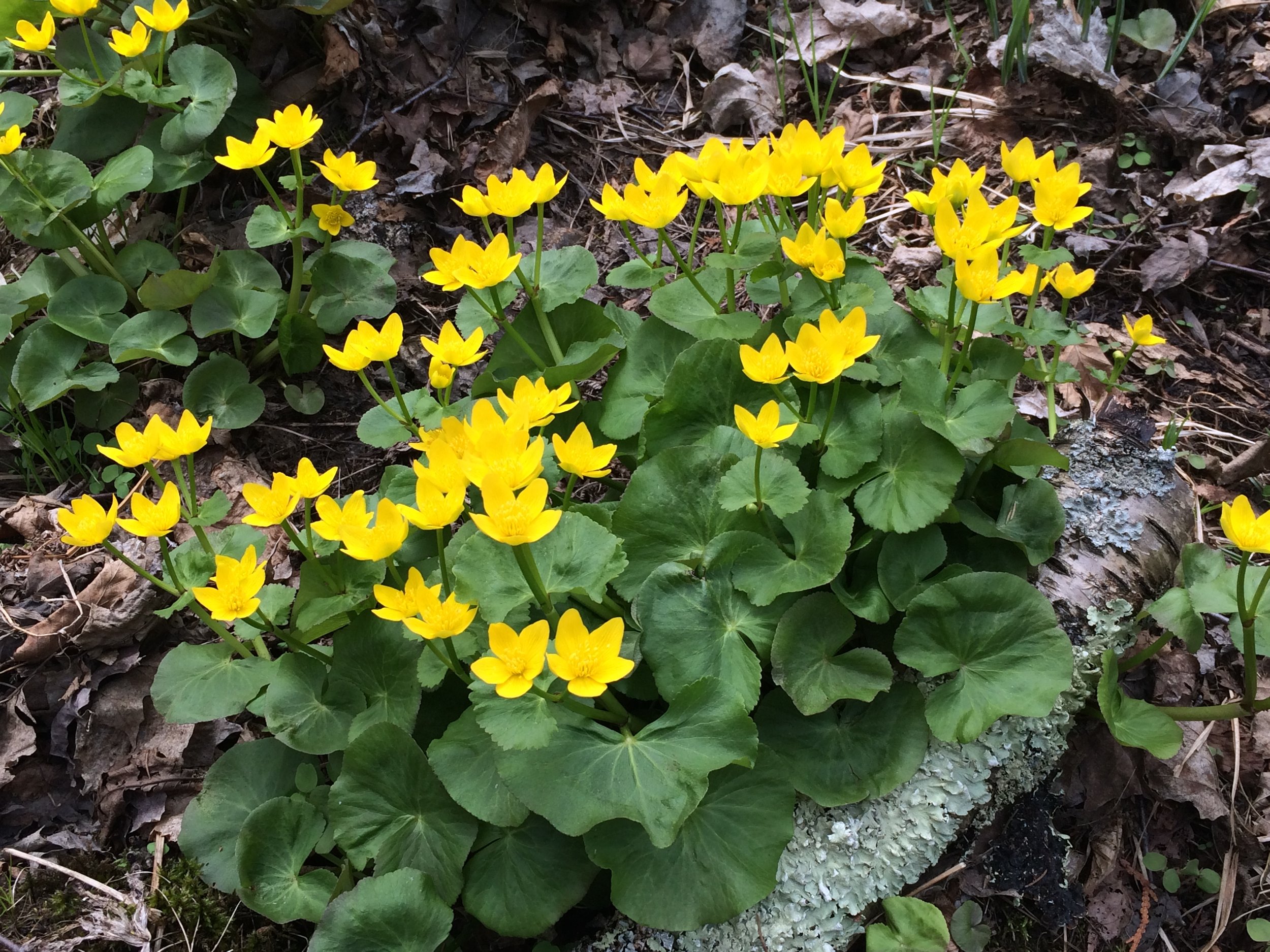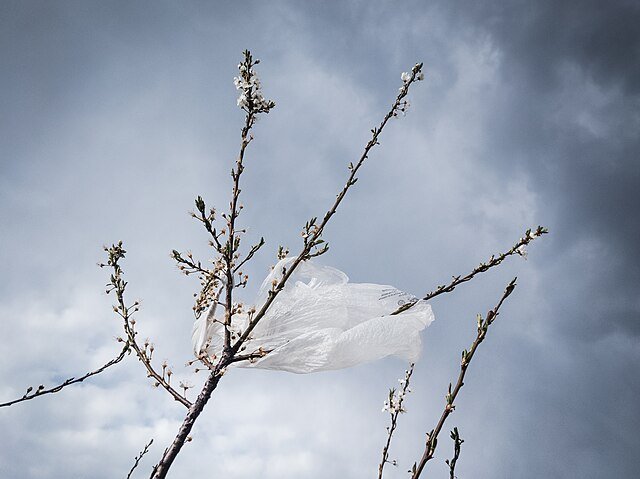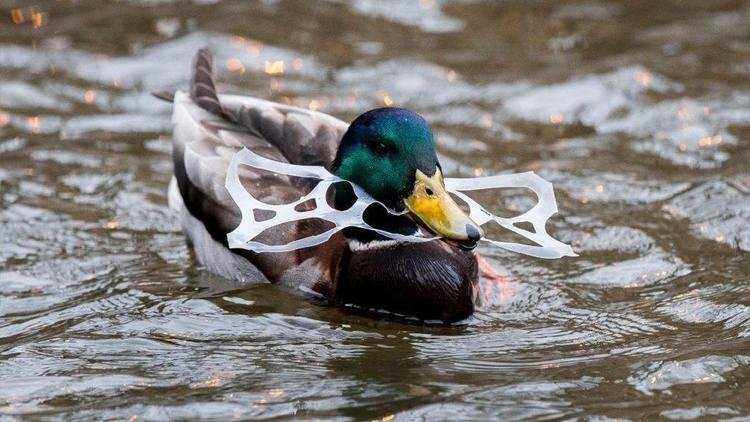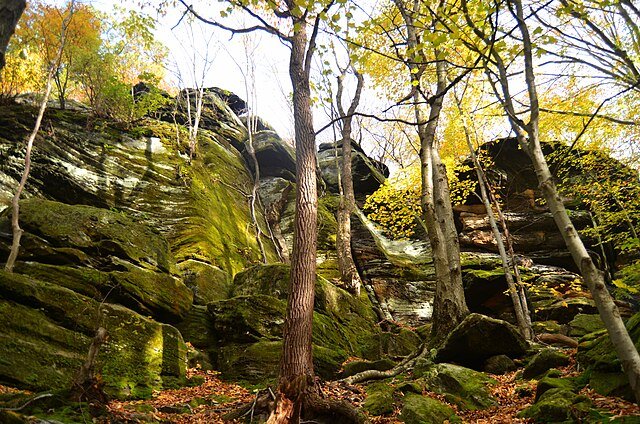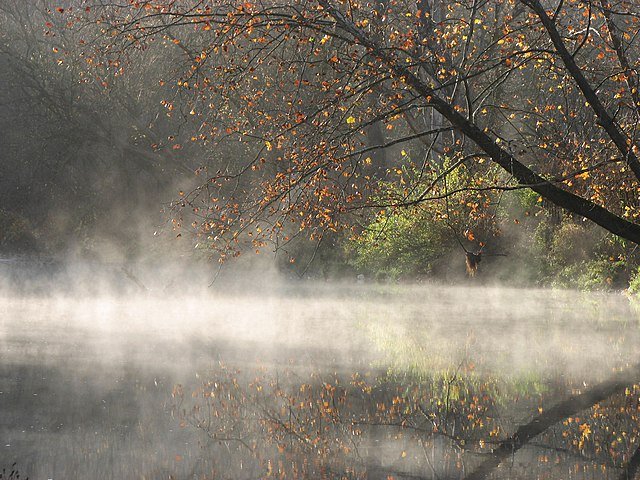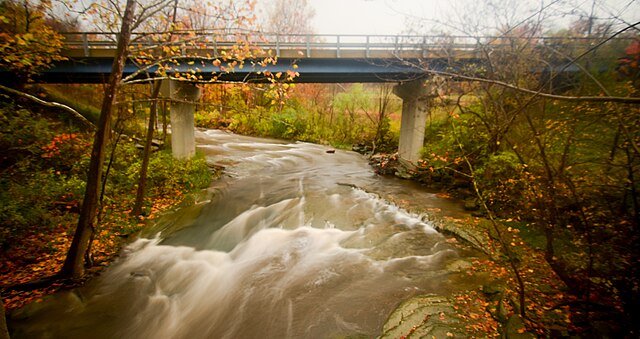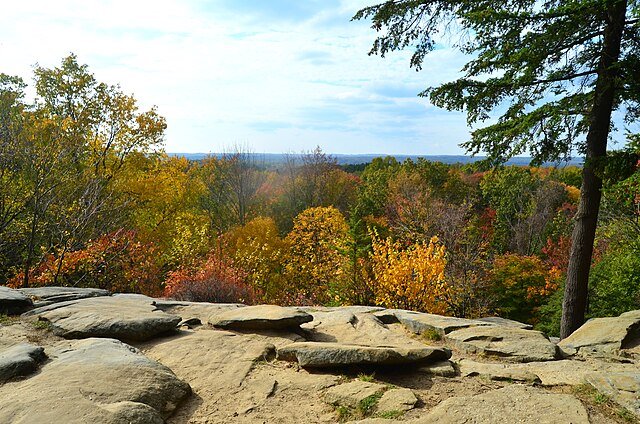April 22, 1970 -- the first Earth Day. It was a day filled with excitement – partly because we would have the whole day out of classes, and partly because we would be part of the great celebration that first Earth Day was. I was a senior in high school, and my entire school went out in teams to clean up trash along the banks of the Cuyahoga River that flowed through Kent, Ohio. I crossed the dirty river every day on my way to school, but I’d never spent time there, or wanted to. It mostly was a trash heap – a convenient place for people to dump old tires, appliances, glass bottles and aluminum cans, bed springs, car batteries, seats, and steering wheels – and even whole cars. But on that first Earth Day, my friends and I spent the day hauling trash out of the river bank. It was good work.
The Cuyahoga -- the river that gave rise to Earth Day. In July 1969, the heavily polluted Cuyahoga River that flows through the industrial cities of Akron and Cleveland, Ohio, caught fire again, and this time the burning river caught the attention of Sen. Gaylord Nelson of Wisconsin. Inspired by the teach-ins of the peace movement, Sen. Nelson suggested the possibility of similar teach-ins to educate about the environment. So, on April 22, 1970, Congress recessed for a day so that representatives could listen to their constituents’ concerns about the environment, and a grassroots movement brought twenty million people to the streets, to town halls, to polluted sites, and to beaches and riverbanks for massive cleanups.
The first Earth Day inspired a movement of environmental activism. The Clean Air Act was signed into law later that year, and the Clean Water Act would follow two years later. Since that time, much of the toxic chemical pollution that regularly was dumped into the air and water in the US has been stopped, and many of the lakes and rivers are seemingly cleaner than they were. But new threats have arisen. Despite years of testifying before the Minnesota Pollution Control Agency hearings, litigation, and protest, indigenous Water Protectors and environmentalists were unsuccessful in their attempts to stop Enbridge from constructing the Line 3 pipeline that threatens wild rice lakes throughout northern Minnesota. Now US Steel has sought permission to release pollutants into Hay Lake, a wild rice lake, raising sulfate levels to eight times the permitted limit. The good news is that for the first time, the MPCA has decided to enforce a law on the book since 1973 that set sulfate limits in wild rice lakes. Nevertheless, US Steel is appealing the decision.
Now one of the greatest threats to water, life, and health is the proliferation of PFAS[i] chemicals. PFAS chemicals are oil and water resistant, making them popular for use in textiles, carpeting, upholstery, non-stick pans, Scotchguard stain protection, and more. Despite the fact that U.S. makers of PFAS-related products stopped producing PFOS in 2002 and PFOA in 2013, the chemicals are persistent and have contaminated water supplies, and shorter-chained PFAS chemicals continue to be made. Nearly everyone in the US has PFAS chemicals in their system, creating health concerns, particularly for women and children. They can make it more difficult for women to become pregnant and raise blood pressure during pregnancy, cause development delays in children, and more generally in the population affect hormone levels and the immune system. The 3M Corporation, based in St. Paul, Minnesota, one of the main manufacturers of PFAS chemicals, dumped toxic sludge in the Washington County and Oakdale landfills for years, and now the toxic chemicals are leaching into the water supplies of several Twin Cities suburbs. The MPCA has plans to stop the spread as best they can and affected communities are developing plans to filter their water supplies, but will it be enough, and who will pay for the cleanup? Three days ago, the Biden administration designated PFAS chemicals as hazardous chemicals under the Superfund law (CERCLA),[ii] making polluters responsible for paying for the cleanup of the chemicals. It still begs the question, the question I would ask of all of these corporations – whether Enbridge, US Steel, 3M or the countless others who continue to treat the earth and its inhabitants as their dumping ground – why? Why in the world would you continue to act in such reckless disregard of this precious earth? Are profit and greed such blinding forces to the fate of life on earth? It would seem so.
The theme for Earth Day 2024 is “Planet vs. Plastics,” demanding a 60% reduction of all plastic production by 2040. From packaging to peanut butter and salad dressing containers, bottled water, bags, fleece jackets, and thousands more, we all use plastics every day. The world produces about 882 billion pounds of plastic a year, and 80% of that is thrown “away” — meaning out of most people’s sight, whether in landfills and oceans, on roadsides and beaches, or tangled in the branches of trees and around the necks of waterfowl.
As plastics degrade into microplastics and nanoplastics, invisible to the naked eye, they fill the air, water, and soil. They’ve been shown to cause intestinal and liver damage. A recent study by the Mayo Clinic links microplastics and nanoplastics found in plaques of human blood vessels to a potential increased risk of heart attack, stroke, or death. Efforts are underway around the world to reduce the use of single use plastics and we all have a part to play in that. It’s at least one thing we can commit to on this Earth Day.
Copenhill
I could go on about the impending climate crisis, about how this past year was the hottest ever recorded, of how we in the US continue to burn fossil fuels at ever-increasing numbers, but wanted to end this piece on a more hopeful note. A few years ago, I listened to Winona LaDuke excitedly talk about the future of hemp, how this renewable organic material could replace many oil and plastic-based textiles and building materials. Since then she’s gone on to develop a hemp farm in northern Minnesota that is doing just that.[iii] Projects highlighted in the recent PBS documentary, “ A Brief History of the Future,” are some of the most hopeful ideas turned into reality I’ve seen – from farming coral to replenish vanishing coral reefs, to successful efforts to clean up the Great Pacific Garbage Patch[iv], to growing mycelium – the building blocks of mushrooms — to build almost anything, to the Copenhill in Copenhagen — the cleanest waste-to-energy power plant in the world designed as a green alpen skihill and so much more. We have the way. We just need the will.
That got me reflecting on the original Earth Day, when every member of Congress took the day to listen to constituents’ concerns about the environment. I’m trying to imagine the current Congress doing such a thing. What a radical act that would be these days where so many in Congress seem far more determined to stop any efforts that would reduce and prevent future harm to the environment, and in fact want to promote further expansion of the production and use of fossil fuels. (I’m still reeling over Trump removing all the solar panels from the White House that President Obama had installed.) But despite efforts to make it one, the fate of the earth is not a partisan issue. It affects us all, especially those without a voice – the rivers, lakes, soils, fungi, flora, fauna, and generations yet unborn. So Congressional representatives truly listening to their constituencies about their concerns about the earth is a great idea, and the ones they should be listening to the most are young people, those most likely to inherit the consequences of my generation’s profligate squandering of the earth, air, water, plant and animal relatives, the climate, and their future. I still have great hope in Millennials, Gen Zers, and their children to turn this around.
The area where we pulled trash from the banks of the Cuyahoga on that first Earth Day is now a beautiful city park. People picnic, hike, canoe, and kayak there. The wildlife has returned, the plants flourish. Due to the Clean Water Act, the river supports fish, turtles, and frogs, and bald eagles have come back to nest. The entire Cuyahoga River Valley, from Akron to Cleveland is now a national park.
We can do this, but it will take all of us – individuals, corporations, industries, agriculture, government. Earth Day need not be, should not be limited to one day of the year. Every day we live on this planet is Earth Day. May we take seriously the words of the Haudenosaunee Prayer of Thanksgiving which begins each day, “To our Mother the Earth, we send thanksgiving, love, and respect. Now our minds are one.”[v] May our minds, and our efforts, be one in this.
[i] Perfluoroalkyl substances.
[ii] Comprehensive Environmental Response, Compensation, and Liability Act.
[iii] Winona’s Hemp & Heritage Farm.
[iv] The Great Pacific Garbage Patch is a floating island of plastic debris estimated to be 625,000 square miles consisting of 45,000-129,000 metric tons of plastic – from fishing nets to water bottles and plastic bags to pens, lighters, toothbrushes, and baby bottles. Whenever I’m picking up trash as I walk the beach along Lake Superior, I routinely find not only these items, but also straws, tampon applicators, dental floss picks (these seem especially ubiquitous since they also show up on inland trails), bottle caps, beverage container lids, Styrofoam, and more.
[v] Braiding Sweetgrass, 108.

